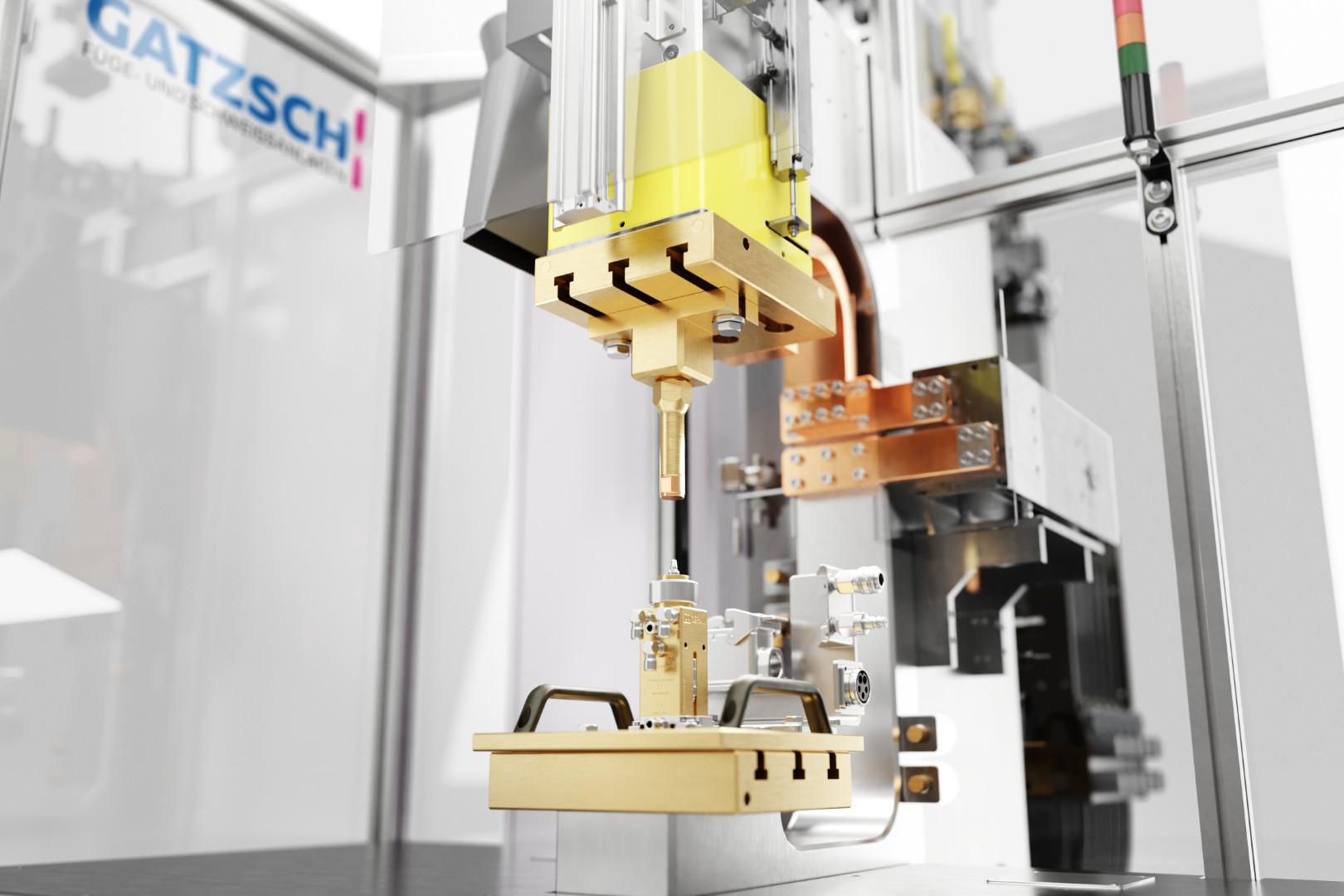Conventional and Projected Methods
These methods mainly differ in how the projections are created or positioned – either mechanically pre-formed, generated by current flow, or deliberately projected through tooling design.
1. Projection Welding with Pre-Formed Projections
The most common variant: In this method, the projections are formed in advance by shaping or stamping one of the components. During the welding process, the current is concentrated on these points, creating a clean and repeatable joint.
Typical applications include automotive bodywork or structural sheet metal components – wherever stability and cycle time are key.
2. Projection Welding with Resistance Points
Here, the projections are not mechanically pre-formed but generated during the process by precisely controlling the current flow and electrode configuration. This method is especially suitable for thin materials or components with sensitive surfaces where mechanical pre-forming is not technically feasible or cost-effective.
3. Projected Projection Welding
In this variant, the projections are created via the specific design of the tooling or electrodes and placed precisely on certain geometries. This allows welding at specific positions or edges and is often used for components with complex shapes.
Special Variants for Specific Requirements
In addition to the conventional methods, there are also special variants designed for multiple welds or challenging material combinations.
1. Multiple-Point Projection Welding
Several projections – one welding process: Multiple-point projection welding creates several joints simultaneously. This requires precisely matched electrode geometry and current distribution. It’s ideal for series production of components with numerous weld points.
2. Weld Riveting
In weld riveting, a rivet-like protrusion is welded onto one of the workpieces and deformed under pressure and heat. This method is commonly used when thicker sheets or dissimilar materials – such as steel and aluminum – need to be joined.
Conclusion: Choosing the Right Projection Welding Method Makes All the Difference
Projection welding is a true all-rounder – but only the right method ensures that your components are joined efficiently, reliably, and with process stability. Whether it’s pre-formed projections, projected designs, or multiple weld points – each approach has its strengths.
What truly matters is the perfect interaction between the method, the workpiece, and the welding system. And that’s exactly where Gatzsch Schweißtechnik comes in: with our expertise in system engineering and the experience gained from countless projects, we develop tailored solutions that integrate seamlessly into your production process.
